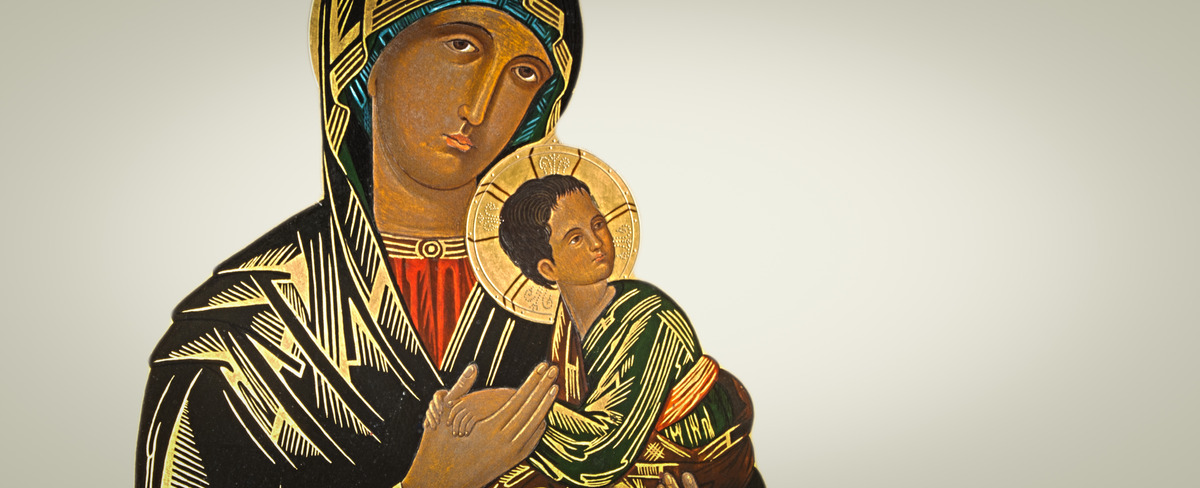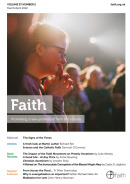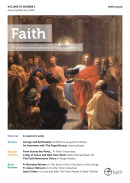Featured
Editorial - Mary and the Church
Marian devotion was deemed rather unfashionable in the Western Church for a while in the 1970s, but it never really lost its popular appeal, and today flourishes anew: vast crowds visit Lourdes annually, the Fatima centenary saw pilgrim numbers there soaring – led by the Holy Father - and in England the shrine at Walsingham, restored at the end of the 19th century draws large groups each summer in this second decade of the 21st.
Evangelising in an Age of Identity Confusion
Interview - Parliament and the pro-life movement
Humanae Vitae and the Scriptures
To hear some people talk, one would get the impression that the prohibition against artificial contraception came out of the blue. However, even a brief review of history reveals a strong and consistent ban on all such activities from the earliest days of the Church in a direct line, right into the twentieth century, with statements to the same effect by Pope Paul VI’s three immediate predecessors, as well as Vatican II’s Gaudium et Spes.
Holloway on… The Gospel of St John Part II
The question arises how far the words of St. John, and the literary cadences of St. John’s Gospel, do reflect directly the words and very expressions of Jesus Christ Himself. One suggests that the correspondence will be very close indeed. It will certainly be ‘substantial’ in the sense of communicating the essential thought of Christ in all its beauty and more than human coherence. I
Book Review: Clarity about God and Science
Let me state at the outset that this is an excellent book, a straightforward and pleasant read, with 26 short chapters of essays, articles, lectures, and book reviews that Barr has written over the past decade or so. Almost all of the pieces are post-2000, and one third of them from 2010 or later.
Book Review: Vivid snapshots of the early church
There is no shortage of books dealing with the Early Church – studies of its saints, its history, its theological and philosophical controversies, schools of thought, the development of its liturgies, and so on – and every year new volumes are added to the shelves.
Book Review: Seeing the world with new eyes
The Virgin Eye: Towards a Contemplative View of Life is the fruit of a very long gestation. Daniels, a one-time music critic, publicity manager for SCOPE, counsellor, social worker and Jungian psychoanalyst, was prompted to put into writing some lectures he gave in the 1990s on the interface between psychology and spirituality. The book was finally edited by Daniels wife Katherine and published after his death.
Book Review: Newman on the Church vs. secularist education
Newman’s Tamworth Reading Room is one of his lesser known works, partly, I suspect, because its title doesn’t suggest what it is about, and partly because it is now tucked away in the volume Discussions and Arguments in which Newman brought together a number of his shorter occasional works in the standard edition he produced towards the end of his life. Also, even those people who do know what it is about - education – assume that the much better known Idea of a University will tell them more about Newman’s educational philosophy.
-
Editorial - Mary and the Church
“May is the month of Mary/Bright is the sun above…”So runs the hymn. But, as Bl. John Henry Newman noted in his Meditations on the Church’s seasons, in Britain “We have often a bleak, inclement May”. However as he went on to point out, even if the month is cold, it holds the promise of warmer weather, of sunshine and the summer ahead.Marian devotion was deemed rather unfashionable in the Western Church for a while in the 1970s, but it never really lost its popular appeal, and today flourishes anew: vast crowds visit Lourdes annually, the Fatima centenary saw pilgrim numbers there soaring – led by the Holy Father - and in England the shrine at Walsingham, restored at the end of the 19th century draws large groups each summer in this second decade of the 21st. The Rosary remains a defining aspect of Catholicism: St John Paul taught a new generation its value and added a new set of Mysteries which now accompany pilgrims as they make their way to Chartres, to Guadalupe, to Carfin, to Knock…or through the streets of London’s Soho or of Liverpool or of a Kent village…The fullness of Christ’s divinityIf we are tempted to think of Marian devotion as a merely sentimental matter, the history of the Church teaches otherwise. Mary has always been the guarantor of Christian orthodoxy, and especially of authentic Christology. In the year 431, in proclaiming Mary to be Mother of God – and not just mother of Christ – the Church affirmed the fullness of Christ’s divinity.As Cardinal Ratzinger – later Benedict XVI – noted “It is, moreover in direct service to faith in Christ—not, therefore, primarily out of devotion to the Mother—that the Church has proclaimed her Marian dogmas: first that of her perpetual virginity and divine motherhood and then, after a long period of maturation and reflection, those of her Immaculate Conception and bodily Assumption into heavenly glory. These dogmas protect the original faith in Christ as true God and true man: two natures in a single Person. They also secure the indispensable eschatological tension by pointing to Mary’s Assumption as the immortal destiny that awaits us all. And they also protect the faith—threatened today—in God the Creator, who (and this, among other things, is the meaning of the truth of the perpetual virginity of Mary, more than ever not understood today) can freely intervene also in matter.”He also noted that Mary links Christians with the people of the Old Covenant: “In her very person as a Jewish girl become the mother of the Messiah, Mary binds together, in a living and indissoluble way, the old and the new People of God, Israel and Christianity, synagogue and church. She is, as it were, the connecting link without which the Faith (as is happening today) runs the risk of losing its balance by either forsaking the New Testament for the Old or dispensing with the Old. In her, instead, we can live the unity of sacred Scripture in its entirety.”Special messageAnd there is a message for women, of special significance for today: “With her destiny, which is at one and the same time that of Virgin and of Mother, Mary continues to project a light upon that which the Creator intended for women in every age, ours included, or, better said, perhaps precisely in our time, in which—as we know—the very essence of femininity is threatened. Through her virginity and her motherhood, the mystery of woman receives a very lofty destiny from which she cannot be torn away.”Mary has long been understood as being a “type” of the Church. Her song in the Magnificat is the song of the Church, her trust in God and full obedience to His will is and must be the essence of the Church at all times.“And the tempest-tossed Church, all her eyes are on Thee” – the hymn “O purest of creatures” expresses an important truth – that in times of difficulty Christians instinctively seek Mary’s help.Marian devotionRecent Popes have all been notable for their Marian devotion. St John Paul and Benedict XVI have already been mentioned; Pope – soon to be Saint - Paul VI named Mary as Mother of the Church, and Pope Francis has now, just this March, added this title into the universal calendar of the Church. It will be celebrated worldwide for the first time this year, on the first Monday after Pentecost.Pope Francis, early in his pontificate, made known his personal devotion to Mary under her title “Untier of knots”, as depicted in a Bavarian painting.Knots to be untangledThere are plenty of knots to be untangled in the Church and in the world in 2018. Too often, there can be a tendency to relish the difficulties: there is a strain in Catholicism that rather enjoys gloom. Often this relishing can take mildly comic forms. There was a spate of end-times-are-nigh in the late 1990s as the Millennium drew near, which sometimes merged with the they-haven’t-told-us-the-real-secret-of-Fatima theme which dissipated after 2000 when Pope John Paul II revealed the final and complete message. And in every century there have been false visionaries predicting the end of the world, each in turn passing the sell-by date.GuideMary is the “guide of the wanderer here below”, as another popular hymn expresses it. In 2018, the Pope and the whole Church here on earth can trustfully place trust in that guidance with fresh heart: her new feast as Mother of the Church falls, on this first time of celebration, in this her month of May. As Cardinal Sarah puts it, announcing the feast as Prefect of the Congregation for Divine Worship and the Discipline of the Sacraments: “if we want to grow and to be filled with the love of God, it is necessary to plant our life firmly on three great realities: the Cross, the Eucharist, and the Mother of God.”

















